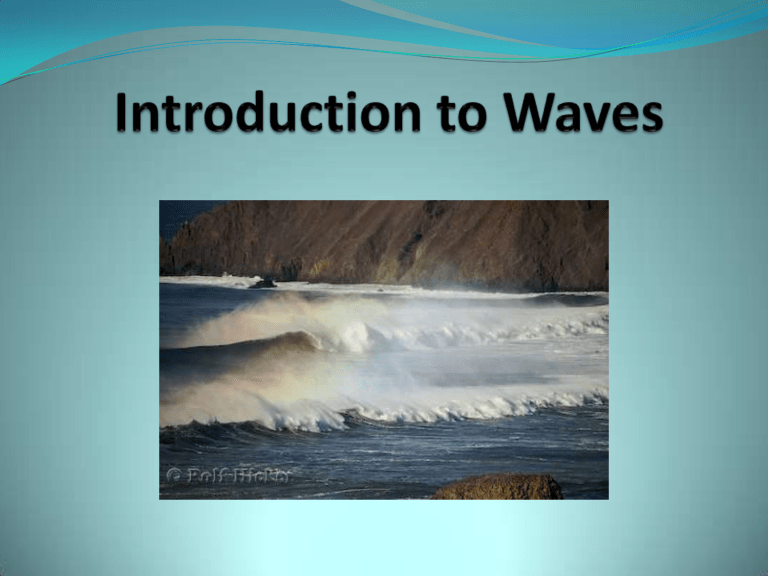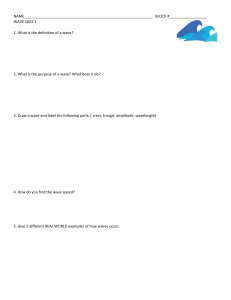
What is a wave? A wave is defined as the propagation of a disturbance that carries the energy and momentum away from the source of disturbance. Wave is a disturbance or variation which travels through a medium. The medium through which the wave travels may experience some local oscillations as the wave passes, but the particles in the medium do not travel with the wave. A group of people jumps up and sits back down, some nearby people see them and they jump up, some people further away follow suit and pretty soon you have a wave traveling around the stadium. The wave is the disturbance (people jumping up and sitting back down), and it travels around the stadium. However, none of the individual people the stadium are carried around with the wave as it travels - they all remain at their seats. 1. Mechanical wave 2.Electromagnetic wave Mechanical wave Mechanical wave is defined as a disturbance that travels through particles of the medium to transfer energy. Sound waves Water waves Seismic waves Mechanical wave Waves in spring Waves on string / rope Mechanical Waves All mechanical waves require: Some source of disturbance A medium that can be disturbed A mechanism to transfer the disturbance from one point to the next point along the medium. Almost all waves are mechanical waves, except EM waves Types of wave Transverse Wave Longitudinal Waves Transverse Waves Is a wave in which the direction of vibrations of particle is perpendicular to the direction of the wave propagation. E.g.: water waves, waves in string. Longitudinal Waves Is a wave in which the direction of vibrations of the particle is parallel to the direction of the wave propagation. E.g.: sound waves, waves in spring Surface Waves Surface waves such as water waves combine longitudinal and transverse wave movement. Properties of the Wave Wavelength, λ: the horizontal distance between any two successive equivalent points on the wave. Amplitude, A: the highest point on the wave pattern Period, T: the time required for the wave to travel a distance of one wavelength. Unit is second. Frequency, f : f=1/T. The frequency is measured in cycles per second or hertz (Hz). Properties of the Wave Wave speed, v: The distance traveled by a wave profile per unit time. v=λ/T= λf Example y (cm) 40 cm 15 cm x (cm) A wave traveling in the positive x direction as pictured above. Find the amplitude, wavelength, period, and speed of wave if it has a frequency of 8.0 Hz. Solution The amplitude and wavelength can be read directly from the figure. A = 15 cm = 0.15 m λ = 40 cm = 0.40 m The period of the wave is T 1 f 1 8.0 Hz 0.13 s Wave speed is v f (8.0 Hz )( 0.40 m) 3.2ms 1








